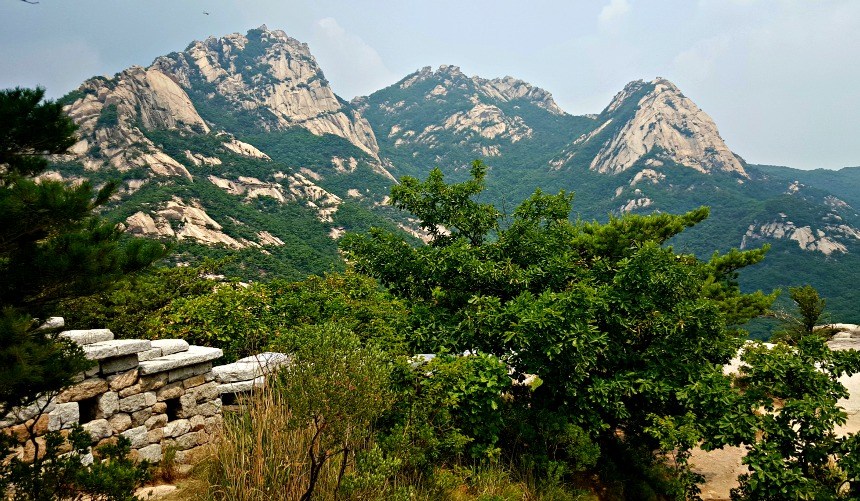Mt. Bukhansan is situated in the northern part of Seoul. Designated as a national park in 1983, the mountain is 78.45km wide and has 6 districts and extends out into Gyeonggi-do Province. The name Bukhansan means “big mountain in the north,” and it is also called Mt. Samgaksan. Mt. Bukhansan has such smooth curves that the large granite rocks sometimes look as if they would slide down the mountain. The sharp peaks provide contrast to the dozens of valleys and rivers flowing below. The mountain has many different kinds of peaks but its main peak is Baegunbong. The granite peaks blend well with trees, and there are about 1,300 kinds of animals and plants living on the mountain. Among the granite peaks, the best known is Insubong Peak’s Giam rocks. The world famous granite rock peak Insubong is over 200m above sea level, and there are about 100 mountain paths leading to the rock. When you stand on Baegundae and look down, sometimes you can see as far as Seoul City and the Hangang River.
Bukhansan has a rich history as well. Silla’s King Jinheung Sunsubi Monument on Bibong Peak, the Bukhansanseong Fortress built along the mountain’s ridges, Sangunsa Temple built by the monk Won-Hyo, and numerous other temples occupy the mountain areas. Especially, Bukhansanseong Fortress is a must-see tour site if you are visiting the mountain. The fortress was built with a wall spanning about 8,500m, built specifically to stop foreign invasion. It is one of the representative mountain fortresses of the Joseon Era. In the fall, the view you can get from the fortress of the mountain is spectacular. Temples are also representative of rich culture that flourished on Bukhansan. The Seungasa Temple on the east Bibong Peak, with Maaeseokgayeoraejwasang (seated rock-carved Buddhas) carved into a 5m granite rock, and the Munsusa Temple located halfway up the Musubong Peak, with purified mountain water dropping from the ceiling of Munsugol Cave, are indicative of both Bukhansan’s history and culture.
With its granite peaks and Bukhansanseong Fortress, Bukhansan is perfect for hiking in all seasons. In the spring, all kinds of flowers bloom, and in the summer, lush forests carpet the numerous valleys. The hiking path along the valley is perhaps the best summer mountain climbing course. And the fall is the perfect time to visit the temples and pavilions in their autumn colors. In the winter, the snow-covered mountain scenery is very beautiful. The park averages 5 million visitors and has received the Honor of being in the Guinness Book of World Records for being the national park with the highest number of visitors per square foot.
Popular nearby, compatible sites for a private tour in Gyeonggi-do:
Seosamnneung Royal Tomb
Address
Goyang-si, Gyeonggi-do
Seongbuk-gu, Gangbuk-gu, Jeongno-gu, Eunpyeong-gu, Seoul-si
경기도 의정부시 , 서울특별시 은평구, 종로구, 강북구, 성북구, 경기도 고양시
Closed
N/A (Open all year round)
Admission Fees
Free

